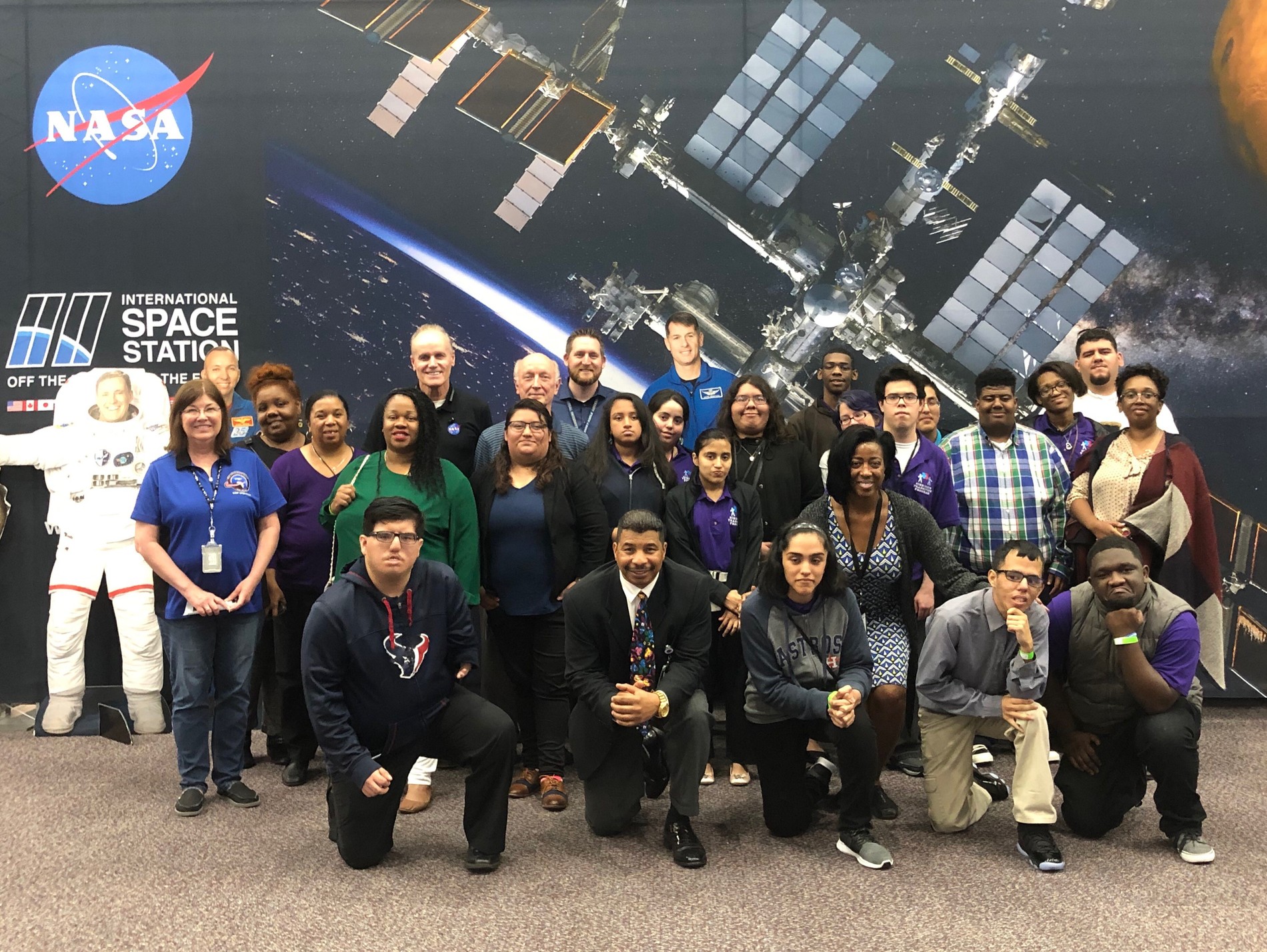CAREERS & the disABLED Magazine Recognizes Johnson Manager with Diversity Award
Benjamin Tracy Minish was recently recognized as one of CAREERS & the disABLED Magazine’s employees of the year.
Minish,
who has worked at NASA’s Johnson Space Center for 35 years as a shuttle
programmer, shuttle instructor, Recon Branch chief, Multi-lateral Ground Segment Control Board chair and Mission Operations branch
chief, is currently the Mission Control Center Systems (MCCS)
Ops manager. He also has Retinitis Pigmentosa, can see less than five
degrees of his field of vision, and is legally blind.
Giving back to the community and IWDs drives Minish, both personally and professionally. Last August at Ellington Field, high-school students with disabilities were invited to try on helmets/parachutes, touch an Apache helicopter and stand on a runway as jets took off. Students heard talks on the importance of getting an education and NASA career opportunities for IWDs. There have been similar outreach opportunities for IWDs in the last six months at the Neutral Buoyancy Laboratory, Space Vehicle Mockup Facility and MCCS. Minish has also mentored with programs such as Texas Aerospace Scholars, Mars Settlement Competitions and Bring Our Kids to Work events.
“I have been extremely blessed to have the opportunities NASA has provided me,” Minish said at the award ceremony. “FOD [Flight Operations Directorate] is like a family, and we care for each other. Every manager and teammate has treated me with respect, provided me with opportunities and given me the tools to do the job. There is a reason NASA ranks number one in employee surveys.”
The reality for Minish is that had he decided to buy into what others believed would be possible—or not possible—for him, his “future” would have turned out much differently.
“When I met with my college counselor, she discouraged me from going into math and engineering because of my eyesight limitations. Being young and stubborn, I ignored her advice—and I have enjoyed a great 35-year career,” Minish said. “When I moved to Houston, I visited my new doctor, who told me at the end of my examination that I had ‘qualified’ for disability, and his assistant could fill out the paperwork. I changed doctors.”
Technology, which NASA has propelled and driven forward since its inception, has leveled the playing field for people with disabilities, and is even redefining the term.
“With the assistive-technology tools NASA provides me, I can manage emails, review documents and create presentations as well as a sighted person,” Minish said. “Employers, and society in general, are unaware that many of the limitations associated with disabilities are no longer limitations. Many are unaware of the assistive technologies, and how inexpensive they are to purchase.”
As NASA prepares to celebrate the 50th anniversary of Apollo 11, Minish reminds us that in our diversity, the center is strengthened to meet the challenges on the horizon, which will bring a return—and stay—to that same desolate Moon that entranced the world just a half century ago.
“As great a man as Neil Armstrong was, we could not have accomplished this historic moment if NASA’s workforce had been made up of only clones of Neil Armstrong,” Minish said. “It took diversity of thought, different perspectives and unique problem-solving skills to meet the challenge.
“Cloning is overrated. Diversity and inclusion were long underrated, but the times … they are a changing. People with disabilities are great problem solvers and bring unique perspectives that can add to any company’s bottom line. Problem solving is deeply embedded in the DNA of people with disabilities.”
For spacesuited boots to sift the sands of the Moon again and, eventually, other worlds beyond, NASA will rely on the generations in school now, who are only beginning to craft their future plans. But first, Minish notes that what these young people really need is inspiration … rather than roadblocks.
“Every person deserves the right to dream!” Minish said. “It is our obligation and challenge to provide encouragement, training, assistive technologies and self-advocacy skills so our youth can reach their dreams. Too often, parents, friends, teachers or employers unknowingly put false limitations on people with disabilities. We are told to lower our sights and minimize our aspirations. We all need to do more to help our youth who have disabilities, so that when opportunity does come, our next generation is able to answer the call.”

Benjamin Tracy Minish (back row in black NASA shirt) pauses for a photo with visiting visually impaired/blind students and accompanying counselors from the Texas Workforce Commission. On April 18, Minish took the group on a tour of NASA's Johnson Space Center.
Catherine Ragin Williams, Johnson Space Center











